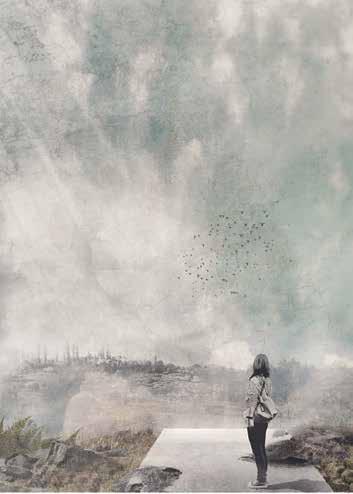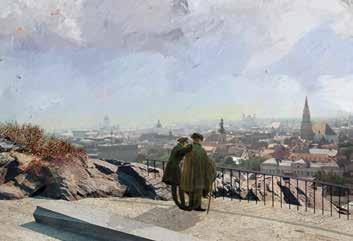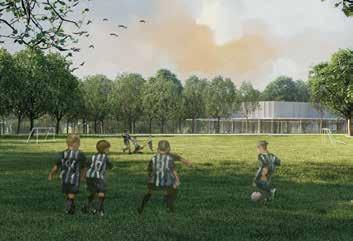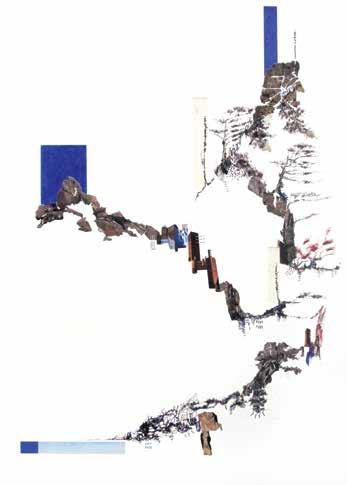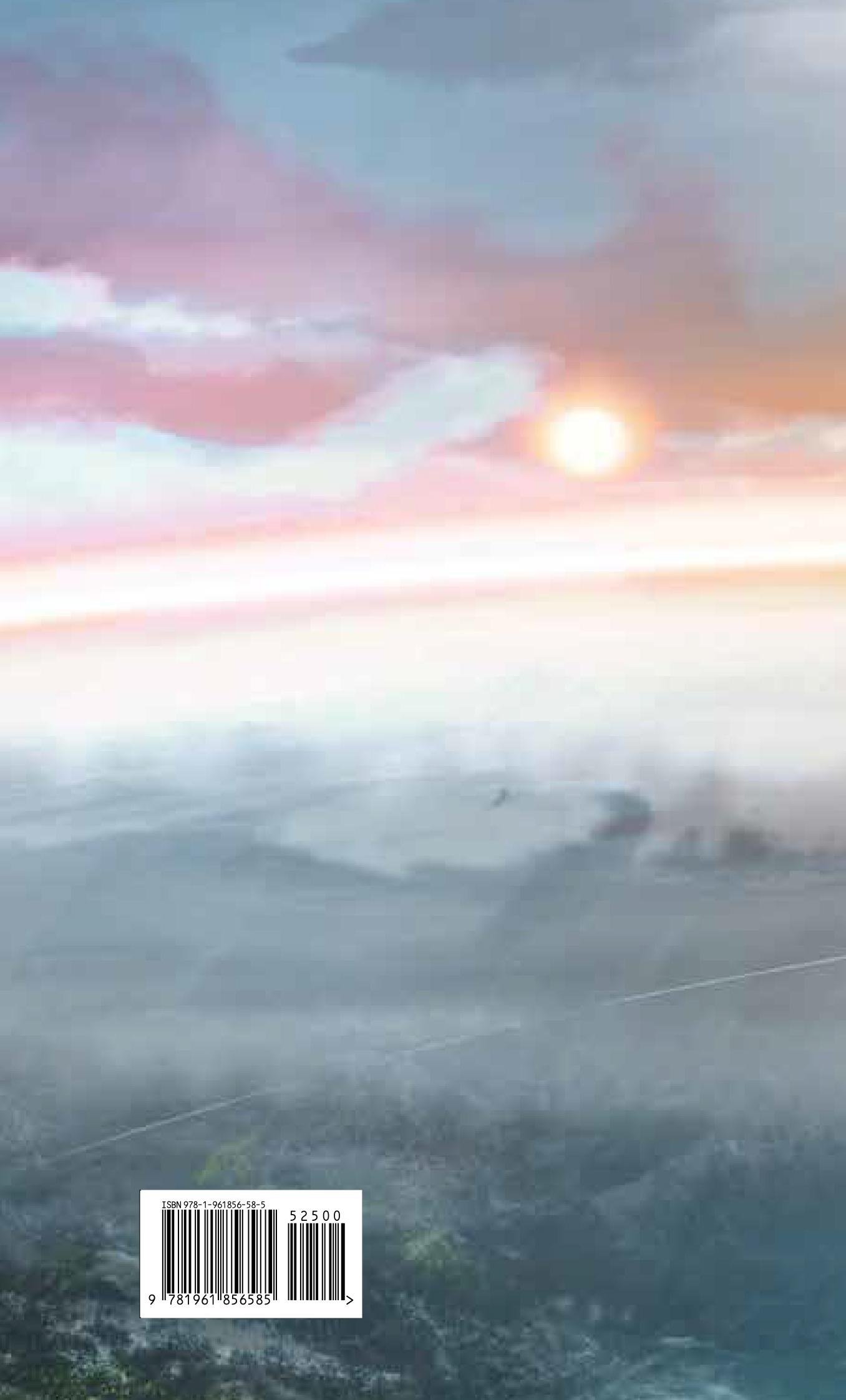
DESCRIBING AND IMAGINING LANDSCAPES
FOREWORD BY FABIO DI CARLO
This book catches some fundamental issues of landscape architecture, design, and teaching. The thin line that divides the knowledge of real landscapes, the imagination and creation of new ones and their representation, is composed in a process of mirroring between the physical elements and their perception and between concrete figures and desires where all these are linked almost by a bond of consubstantiality: Landscapes and their descriptions are often made of the same material. In this sense, this work’s contents are part of an essential debate, current although not new, with roots both in the more recent past and in the deeper history of a discipline that was originally born within the figurative arts. For over three decades, we have experienced an almost complete conversion that has seen all the branches of the design activities involved in an immersive process inside the digital world. This is a process dominated by
a mechanistic presumption of scientific and technical supremacy of digital data. A sort of neue sachlichkeit, a new objectivity, which today finds in BIM the expression of a total power of process control where the tool replaces the creative process.
Likewise, in the landscape project, the description increasingly pursues the myth of realism and photorealism through increasingly extreme tools - not yet thoroughly tested - between augmented reality and more, and which perhaps one day will be able to make us feel the smell of the flowers we would like to plant. After 30 years, it is possible to conclude, even from a critical and laic position, which this volume tries to give shape.
First, there is a need for a clear ontological distinction between the purpose of design activities and the purpose of representation, between the role of the contents and that of the different drawing tools. Then, these kits need to be updated to meet the current demands of the landscape project. Among these are ecology and awareness of environmental transition as a constant of an era, according to a consciousness that is no longer anthropocentric but necessarily holistic and inclusive. Here, the project of new ecologies requires other modalities and more open forms of projects that are less crystallized in conception, as in description and communication.
Moreover, understanding that in addition to the virtuosity of hyper-representation, in the relationship with the project users, the need for much more accessible storytelling tools strongly emerges. In this sense, Stefàno’s work recovers, for example, the role of illustration as a passage and tool that is at the same time friendly but also capable of stimulating suggestion and imagination in different users.
Finally, there is the relationship between landscape imagination and other sciences and disciplines. Leonardo da Vinci already felt the need to represent landscapes with a background but with an autonomous story
and dynamic and transformative characteristics. Likewise, Calvino’s Invisible Cities, from his novel of the same name, contain richer and more complex landscapes than those of actual cities that can be represented. Nowadays, cognitive sciences and the theory of mirror neurons explain well the role of intangible components in the individual and collective representation of reality.
Therefore, the representation of landscapes today, through the use of a mix of techniques, from the most traditional to the most innovative ones (up to AI), with the most diverse purposes and values, including ethical ones, can return to being an exercise that favors complexity, and return to being a rich experience in the conception, competence, and communication of identity and meanings.
To study an art means to establish its limits, while comparing it with others means emphasizing the same inner tension.
Wassily Kandinsky, The Spiritual in Art, 1910.
INTRODUCTION
As we reflect on the role of representation in contemporary landscape design, some questions arise: Why do processes involving representation continue to be an interesting research topic? How do they make each of us a unique observer and interpreter of reality, adding quality to the creative design process? This book delves into the relationship between representation and landscape design to question how it can help us understand natural phenomena and support education in promoting the conscious use of visual languages. Contemporary landscape design refers to a complex set of elements. Representations simultaneously communicate multiple aspects and information: they manifest social needs, propose cultural models, report scientific data, and, last but not least, are a vehicle for expressiveness. Landscape design visualization has great potential, as it can take on diverse formulation modes. Today, it can make us think of the project as a
hybrid and multiscalar process or a material and sensory experimentation, proving to be a great opportunity.
On the one hand, technologies have increased representation modes, thanks to the introduction of sophisticated systems. Digital programs make it possible to map vast territories with Geographic Information System (GIS) tools, create detailed three-dimensional models with Building Information Modeling (BIM), and interact with users through augmented reality or artificial intelligence (AI). On the other hand, there is a certain flattening of expressive languages - particularly in education - and the frequent reliance on repetitive and unoriginal styles in the representations produced. This can be found, in general, in contemporary society, which is characterized by continuous image consumption. No longer interested in spending time to know phenomenas, we tend to consume and sell. This demand leads designers to have to translate everything into rendering, almost compulsively. These are in demand everywhere: architecture, construction, and interior design. This thesis refers to visual languages, understanding them both as a possibility for better project success and as an individual tool for expressing oneself consciously.
Some studios deal with post-production, digital visualization, and graphic communication, for which original research had been conducted, but more is desirable. Indeed, this case shows probably a certain distance between those who design and those who describe ideas. The propensity to entrust representation to visualisation professionals, typical in the current way of thinking about design to appear à la page, shows that perhaps this is not considered as a fundamental part of the creative process, that is, an opportunity to share information and formulate reasoning as unique and inimitable expressions. Many of the images produced then end up in magazines and, consequently, tend to spread a style that people repeat in a continuous cycle.
Various authors surmise that representation is experiencing a crisis, especially in education, as it would rarely be taught thoroughly as an expressive language. Many of them have rediscovered its importance as a complex cognitive system and recognize that drawing and manual representation allow irreplaceable intimacy and expressiveness. It seems necessary to understand how it can be preserved in today’s design education, dealing with incredible technological innovations on the one hand and complex environmental challenges on the other. The aim of this reflection is primarily due to teaching methods. Indeed, the procedures adopted by most universities may explore more in-depth representation as art and as a visual language, as well as of colleagues of the academy of fine arts or the music conservatory are dedicated to artistic languages. This immediately suggests how students can meet the complexity of the creative process and visual language and its declinations.
Given that representing landscape design is a complex process, it is helpful to understand what references designers need to communicate effectively. Thus, in Chapter 1, the current need for representation in landscape design and the opportunities for hybridizing manual and digital drawing to contemplate and manage environmental transformations will be investigated. In Chapter 2, the historical relationship between representation and landscape design will be considered, starting from the anthropocentric model and arriving at the holistic model. Chapter 3 will focus on representation as a cognitive tool for developing students’ critical and creative skills. Chapter 4 will analyze the role of representation in the European context to understand what forms creative processes can take. Finally, Chapter 5 will consider possible themes to overcome the homogenization of design languages.
We generally identify two meanings of the term “representation.” One is material, that is, the depiction of the expression using images or plastic elements of aspects of
reality or abstract concepts. The other meaning leads to a figuration comprehensible by the intellect. The derivation is philosophical; according to the meaning, “representation” is any process by which the content of perceptions, imaginations, and concepts presents itself to consciousness. The term “representation” will be used to refer to creative processes in a broad sense, while “drawing” will be used whenever it proves necessary to focus on the technique of manual or digital drawing in a specific sense. Meanwhile, image selection is based on aspects like sensitivity, critical ability, and originality. These references are intended to highlight the legacy of artistic languages and the connection of the activity of landscape design with the fine arts. The same applies to literary texts and musical compositions, which can equally be considered forms of representation. It is also necessary to clarify that the frequent references to art history and to the landscape’s visual aspects are not intended to reduce the latter’s concept to that of an image just in an aesthetic way. Conversely, it is intended to think about the process that leads to reflection through representation to understand and transform it. Anyone who has tried to draw a landscape, a face, or an animal extemporaneously knows that, in drawing it, we see things we were previously unaware of as if we begin to look at the world for the first time. This research will focus on the creative experience. This is a necessary discourse if the expressive languages of the project are to be enhanced. Therefore, all references related to landscape representation — especially to painting — can be understood in this sense: that is, as an attempt to grasp, somewhat like the title of a well-known book by Konrad Lorenz, Die Rückseite des Spiegels, the other side of the mirror. If the mirror, for Lorenz, represents the human being reflecting what he knows with his senses, the other side of the mirror is everything that brings him to know the real world. The research is not intended to be exhaustive but to offer insights in considering representation in a
new way in design and education. The goal was to recall the passion aroused by specific themes, reminding us how vast and surprising they can be. If, in our world, we communicate mainly through images, representation becomes an essential tool for effectively elaborating and communicating landscape design, understanding with an awareness of the needs related to the quality of life in our cities and on this planet. It is an opportunity to interpret the world and its phenomena, on which our way of seeing and thinking depends, thus our attitude toward landscape values and our approach to the transformations of nature.
CHAPTER ONE

